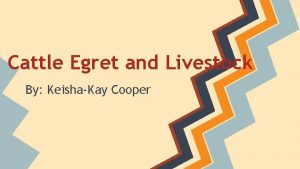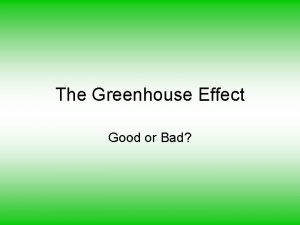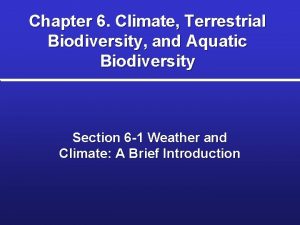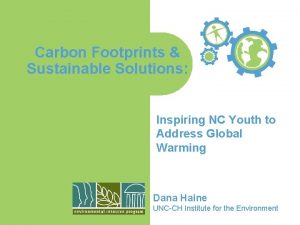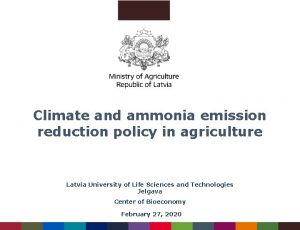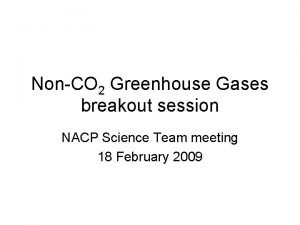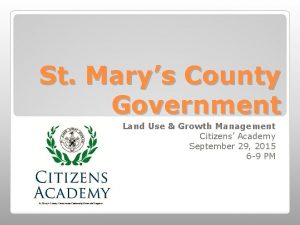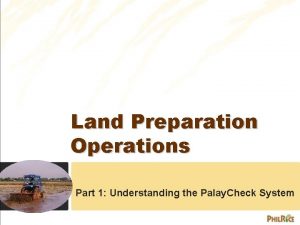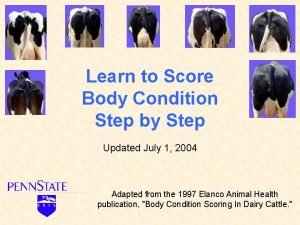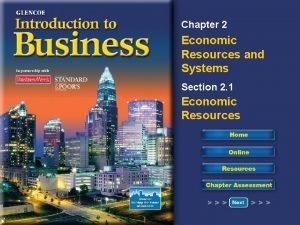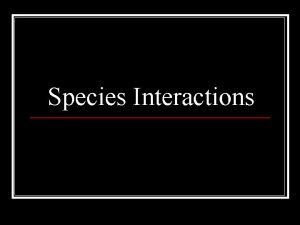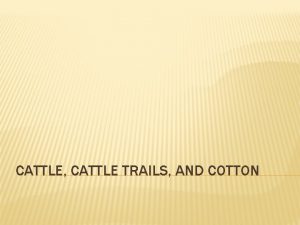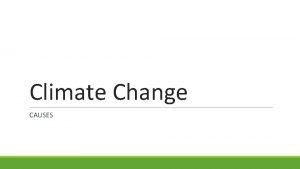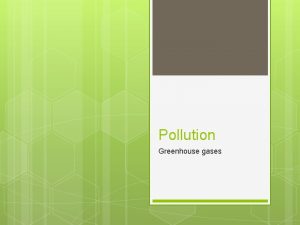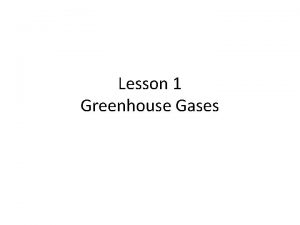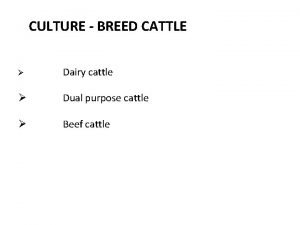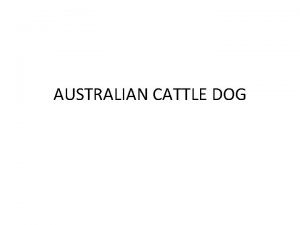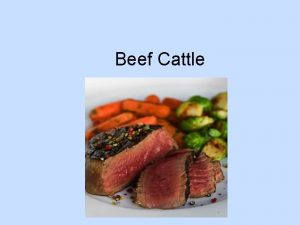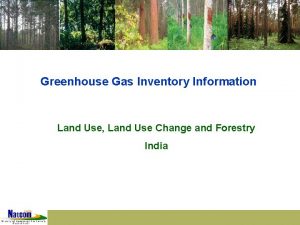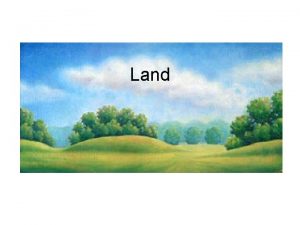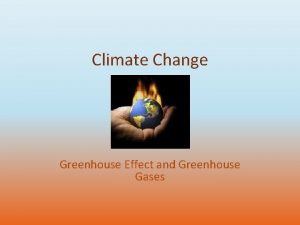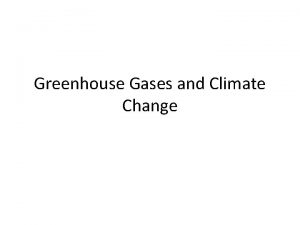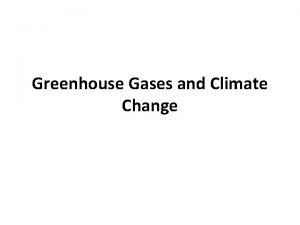Cattle and Land Use 1 Greenhouse Gases Greenhouse














- Slides: 14

Cattle and Land Use 1. Greenhouse Gases Greenhouse gases are essential to keep us warm and comfortable here on Earth, but due to human activities such as burning fossil fuels, chopping down forests and using unsustainable farming methods, the “greenhouse effect” is on the rise and contributing to global warming. The main greenhouse gases in the Earth's atmosphere are water vapor, carbon dioxide, methane, nitrous oxide, and ozone. The global contribution of farming and agriculture is up to 32% of all human-induced greenhouse gas emissions. But what does this have to do with cows?

Image from: Marian Koshland Science Museum

Cattle and Land Use 2. Beef Cattle Did you know that eating meat causes more environmental damage than all transportation combined? “Beef Cattle”, the term used to describe cows that are raised for their meat, actually contribute up to 18% of the total Greenhouse gases known to cause climate change. But more on this later… Let’s start with this particular cow. It weighs 400 kilograms! But where do they keep cattle cows?

Image from: Alabama Beef Cattle Pocket Guide

Cattle and Land Use 3. Deforestation In order to create space for intensive farming techniques, forests need to be cleared. In Canada, about 3. 5 acres of land is used to feed each person – but that’s because we eat a lot of meat, around 100 kilograms each, per year! If we chose to eat less meat, some of these cleared forests could be returned to their former wilderness and natural ecosystems could be restored. This is because a lot of the 3. 5 acres is actually used to feed the cow, not us. But doesn’t the cow just eat grass?

Image from: New York Times

Cattle and Land Use 4. Cow Feed Cows are naturally born to eat grass. It’s just what they do. But somewhere along the line, humans decided that cows being raised in intensive farms should actually eat grains, such as wheat, corn and soy, to make them grow bigger, faster. A lot of forest is cleared to make space to grow all of this wheat, corn and soy to feed the cows because it’s not a very efficient process. It takes 6 kg of grains to produce enough energy for only 1 kg of edible meat. Unfortunately, in order to keep up with demand, farmers growing cattle feed use a lot of pesticides, herbicides and fungicides that seep into the soil and water ways. That’s a whole extra environmentally destructive step in the food system that could be avoided if we ate less meat. But how is the environment affected exactly?


Cattle and Land Use 5. Water Remember that 6 kg of grain crops it took to make 1 kg of meat? Well it takes around 1, 000 -2, 000 litres of water to grow every kilogram of grain – that’s 6, 000 -12, 000 litres of water for every kilogram of meat! So, if we times that by 140 kilograms of meat per cow, we need around 840, 000 – 1, 680, 000 litres of water! That’s a lot of water – and doesn’t even include what the cow drinks directly! In addition to this overuse of water, there’s also the problem of water contamination with chemical residues being used on the crops. I wonder what else is floating in that water?

Image from: Ali Traders

Cattle and Land Use 6. Manure Cows poop. A lot. It’s a natural progression for manure to make its way into the air, water and soil. Usually, animal manure would be considered good for the soil, right? Well, when you factor in all of those nasty chemicals that their feed is sprayed with, and the antibiotics they’re fed to keep them from getting sick, it’s not so great. Cows from industrial farms often have heavy metals, nitrogen, phosphates and methane in their manure. Methane gas has 21 times more global warming potential than carbon dioxide and is therefore a significant greenhouse gas.

Image from: Discovery Channel

Cattle and Land Use 7. Soil The soil degradation that happens as a result of intense cattle farming is a serious problem. Erosion refers to the loss of precious topsoil as a result of the loss of roots and cattle disturbing the land. Topsoil is roughly the top 2 inches of soil that contains the highest concentration of organic matter, microorganisms and is where most plants send their roots to collect vital nutrients for growth. On top of this is the problem associated with the compacting of the soil. Hundreds of 400 kg animals with hooves can really do some damage! Compaction reduces the air space within the soil, making it very difficult to absorb rain. As a result, rain runs right off, making erosion even worse!

Image from: The Wildlife News
 Cattle egrets and livestock
Cattle egrets and livestock Climate stability
Climate stability Greenhouse gases are good or bad
Greenhouse gases are good or bad What human activity produces the most greenhouse gases
What human activity produces the most greenhouse gases Greenhouse gases composition
Greenhouse gases composition What are the greenhouse gases
What are the greenhouse gases An area of land largely enclosed by higher land
An area of land largely enclosed by higher land High rocky land usually with steep sides
High rocky land usually with steep sides St mary's county land use and growth management
St mary's county land use and growth management Wet land preparation
Wet land preparation Hooks and pins cattle
Hooks and pins cattle Pins and hooks in cattle
Pins and hooks in cattle Range cattle research and education center
Range cattle research and education center Some natural resources such as wheat and cattle are
Some natural resources such as wheat and cattle are Cape buffalo and cattle egrets relationship
Cape buffalo and cattle egrets relationship
